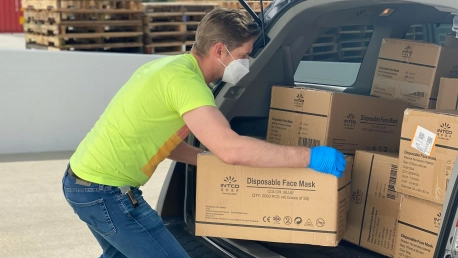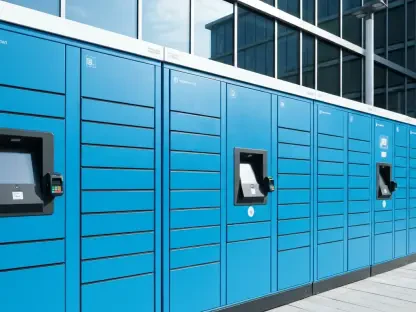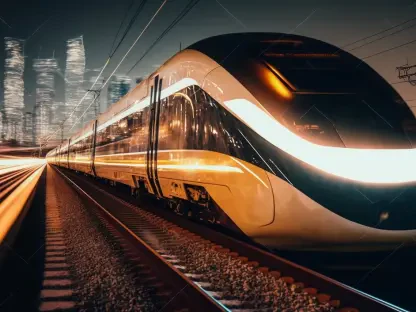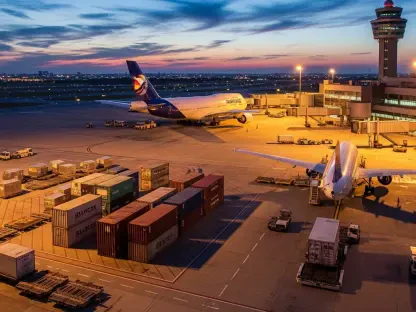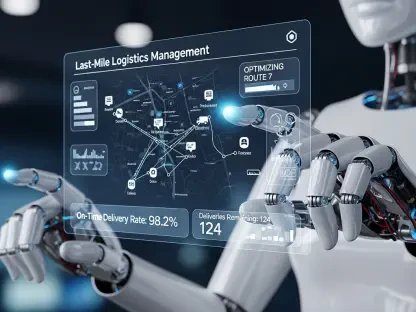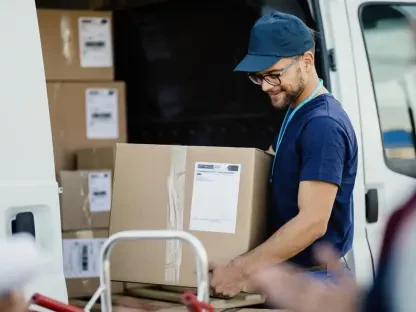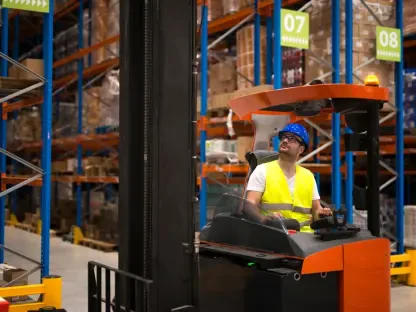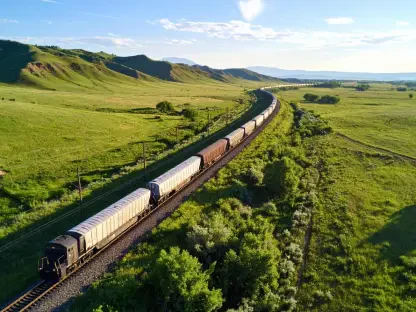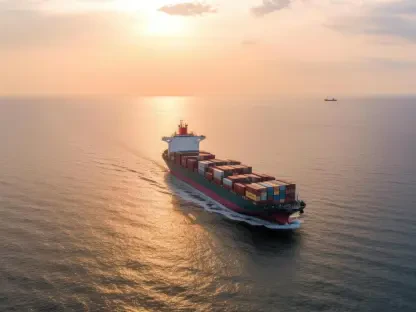In the face of escalating courier, express, and parcel shipments, the logistics and shipping industry in Germany is rapidly advancing towards increased automation. The year 2022 alone saw 4.15 billion shipments in Germany, and projections estimate this figure will surge to approximately 4.9 billion annually by 2027. As these numbers climb, the sector faces a dual challenge: managing these ever-increasing volumes efficiently while contending with a significant personnel shortage. Automation, particularly through advanced robotic solutions, is emerging as the ideal response. AWL’s RODE, a highly sophisticated robotic depalletizer system, represents a notable innovation in this arena by automating the processing of packages of various sizes and weights.
Revolutionizing Parcel Handling with RODE
Enhancing Operational Efficiency
One of the most significant applications of AWL’s RODE system is at DHL eCommerce in Rotterdam, where it has substantially improved operational efficiency. The RODE depalletizer can handle up to 800 parcels per hour, each weighing up to 31.5 kg, marking a significant advancement in logistics automation. The RODE utilizes advanced algorithms that allow it to autonomously identify and pick parcels from pallets, calculate the optimal gripping position, and avoid collisions with other parcels and the machine itself. This unparalleled level of precision is enabled by the integration of two Ensenso X36 3D cameras, which provide comprehensive 2D and 3D image data crucial for the system’s high functionality.The system’s ability to process a wide range of parcel sizes and weights without human intervention is notable. This flexibility not only enhances day-to-day operations but also makes it adept at handling peak times, such as during the holiday season when shipment volumes dramatically increase. For logistics companies like DHL, which face immense pressure to deliver high volumes quickly and accurately, systems like RODE offer an invaluable solution. By automating the more tedious and physically demanding tasks, companies can ensure faster turnaround times and maintain high service levels even during surge periods.
Improving Employee Safety and Productivity
Automation’s transformative impact on labor dynamics within the logistics sector is another critical aspect highlighted by the introduction of systems like RODE. By delegating physically strenuous and ergonomically challenging tasks to robots, companies can reallocate human resources to more specialized roles. Employees can focus on activities such as customer service and intricate package processing, which are less physically demanding but equally crucial for operational success. This reallocation not only improves overall productivity but also enhances employee safety and job satisfaction. The reduced risk of workplace injuries due to heavy lifting and repetitive motions is a significant benefit, particularly in an industry that often struggles with workforce retention due to the physically taxing nature of the job.The adoption of RODE and similar systems also aligns with broader industry trends emphasizing workplace safety and employee well-being. By minimizing the need for manual labor in physically demanding roles, companies can create a safer and more conducive working environment. This shift towards automation reduces the risk of injury-related downtime and associated costs, offering long-term savings and a better return on investment for logistics providers. Furthermore, the ability of robotic systems to work continuously without fatigue means that operational efficiency is sustained around the clock, further underscoring the benefits of integrating such advanced technology into the logistics workflow.
The Role of AI and Robotics in Modern Logistics
AI-Driven Image Processing and Real-Time Decision-Making
RODE’s remarkable performance is primarily driven by its integration of AI and sophisticated imaging technology. The Ensenso X36 3D cameras are crucial to this system, providing the necessary image data that allows RODE to make real-time decisions with remarkable accuracy. These cameras capture detailed 2D and 3D images of the parcels, which the AI algorithms then analyze to determine the optimal way to grip and move each package without causing damage or disturbing adjacent items. The convergence of these technologies means that RODE can adapt to the varied shapes, sizes, and weights of parcels it processes, making it highly versatile and reliable in a fast-paced logistics environment.This AI-driven approach not only boosts the system’s efficiency but also its adaptability, enabling it to handle unexpected challenges such as parcels that are poorly stacked or irregularly shaped. The system’s intelligence allows it to “learn” from these situations and continuously improve its performance, further reducing the likelihood of errors and increasing throughput. This capability is particularly valuable during peak periods when the volume and diversity of parcels are at their highest, ensuring that operations remain smooth and efficient under pressure.
Industry Adoption and Future Landscape
The overarching trend in the logistics industry is a widespread embrace of AI and robotic technologies to meet the sector’s growing demands. AWL’s RODE depalletizer is a prime example of how these advancements are becoming integral to modern logistics operations. The system’s sophisticated gripper technology and its ability to make real-time decisions are setting new standards for what automation can achieve in parcel handling. As more companies recognize the benefits of such technologies, the industry is poised for significant transformation.This shift towards automation is not merely a response to current challenges but also a proactive strategy for future growth. The integration of systems like RODE allows logistics companies to scale their operations effectively, ensuring they can meet rising shipment volumes without proportional increases in labor costs. Moreover, the enhanced accuracy and efficiency provided by these automated systems translate to better customer satisfaction, as parcels are handled more swiftly and with fewer errors. In summary, the adoption of advanced robotic solutions is a vital step for logistics providers aiming to stay competitive in an era characterized by rapid technological advancement and growing demand for efficient parcel delivery.
Automation: A Necessary Strategy for the Future
Addressing the Pressing Need for Efficiency
In synthesis, AWL’s RODE depalletizer is revolutionizing parcel handling through innovative robotic technology, effectively addressing the pressing need for increased automation in the logistics industry. The integration of AI, advanced imaging, and real-time decision-making capabilities exemplifies a significant leap forward towards fully automated logistics operations. The system not only enhances operational efficiency by processing up to 800 parcels per hour but also transforms labor dynamics, reallocating human resources to more specialized roles and improving employee safety and productivity.The importance of automation in handling future shipment volumes cannot be overstated. As the industry braces for continued growth in parcel shipments, driven by rising e-commerce activities and global trade, the ability to manage this influx efficiently will be a key differentiator for logistics providers. The insights and data provided by systems like RODE offer invaluable support for making informed operational decisions, optimizing workflows, and maintaining high service levels, even during peak demand periods.
Industry Consensus and Future Prospects
In response to the rising demand for courier, express, and parcel shipments, the logistics and shipping industry in Germany is rapidly moving toward increased automation. In 2022 alone, Germany handled 4.15 billion shipments, and it is projected that this number will rise to about 4.9 billion annually by 2027. As these figures grow, the industry faces the dual challenges of managing this burgeoning volume effectively while dealing with a severe workforce shortage. Automation, especially through advanced robotic technologies, is increasingly seen as the optimal solution. One noteworthy development in this arena is AWL’s RODE, an advanced robotic depalletizer system. This innovative system facilitates the automation of processing packages of varying sizes and weights, addressing the need for efficiency and reliability. Through such automation, the logistics sector can better cope with the anticipated increase in shipment volumes and alleviate the strain caused by the workforce gap, thus ensuring timely and accurate deliveries.
